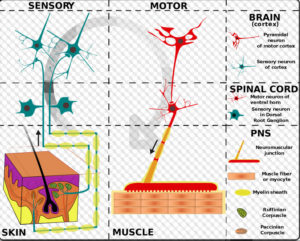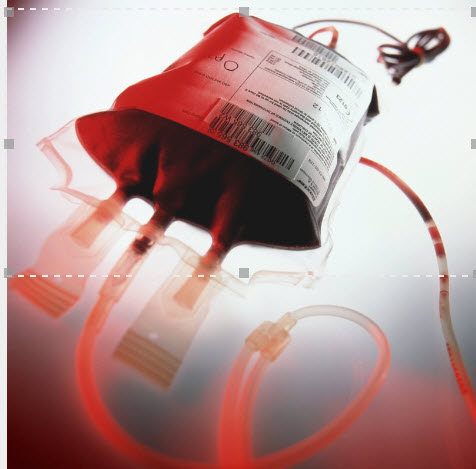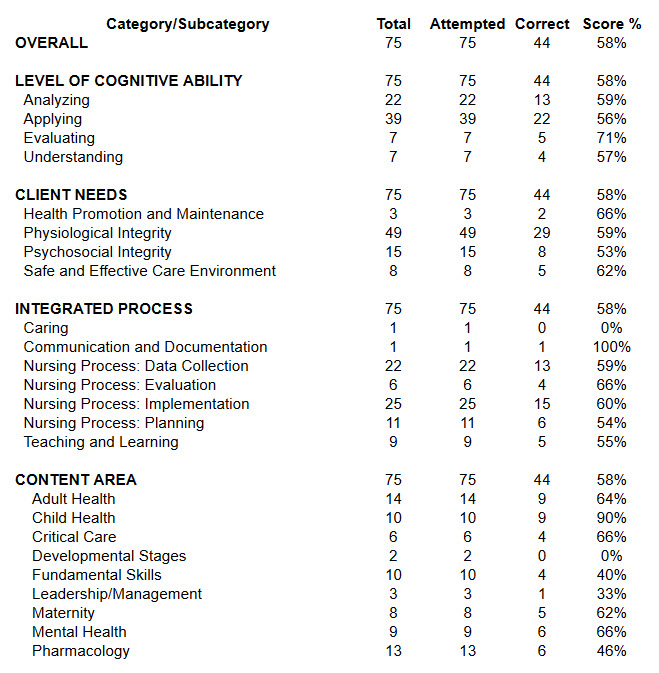 The last part of Medications Affecting the Nervous System (Part 4)
The last part of Medications Affecting the Nervous System (Part 4)
CI = Contraindicated
Ĉ = With
Local Anesthetics
Expected Action:
Decreases pain by blocking local conduction of pain impulses
Amide type: Lidocaine
Ester type: tetracaine, procaine
Adverse Effects:
CNS excitation — treat ĉ midazolam (Versed) or diazepam
Hypotension, bradycardia, heart block, cardiac arrest
Allergic reactions (more likely ĉ esters)
Decrease uterine contractility.
Spinal headache (lay flat for 12 hrs)
Freely cross placenta
Urinary retention (call after 8 hrs)
Contraindications/Precautions:
CI in dysrhythmias and/or heart block
Caution with liver/kidney dysfunction, heart failure, myasthenia gravis
General Inhalation Anesthetics
Expected Action:
Loss of consciousness, loss of sensation, relaxation of muscles, amnesia
Examples: Halothane (Fluothane), isoflurane (Forane), nitrous oxide
Adverse Effects:
Hepatotoxicity, Gastric aspiration, Hypotension, Respiratory & cardiovascular depression, Malignant hyperthermia (d/c med, ice or ice saline infusion, dantrolene)
Interactions:
CNS depressants: Additive effect, Opioids: constipation & urinary retention
Education:
Succinylcholine – used as a muscle relaxant
Encourage early ambulation
Assist with lung expansion
Intravenous Anesthetics (Key Points)
Barbiturates: Thiopental (Pentothal)
Ketamine (Ketalar)
Benzodiazepines: Diazepam (Valium), midazolam (Versed), lorazepam (Ativan)
Propofol (Diprivan)
Therapeutic Uses:
Adjunct to inhalation anesthesia
Induction & maintenance of anesthesia
Amnesia
Midazolam & an opioid result in conscious sedation
Ketamine can be used with children
Intravenous Anesthetics
(Effects and Interactions)
Thiopental, Diazepam, Ketamine, Propofol, Midazolam
Adverse Effects:
Respiratory and cardiovascular depression
Propofol: Bacterial infection (use opened vial within 6 hrs)
Ketamine: Psychologic reaction (premedicate with diazepam to decrease risk)
Contraindications/Precautions:
Ketamine should be avoided with psychiatric disorders
Interactions:
CNS depressants and stimulants: Additive effects
Opioid analgesics: Constipation and urinary retention
Education:
Midazolam (Versed): inject over >2 minutes
Propofol (Diprivan): inject into large vein; prep site with lidocaine.
Antipsychotics – Conventional
Expected Action:
Dopamine, acetylcholine, histamine, & norepinephrine receptors in brain and periphery are blocked. Symptom inhibition d/t dopamine2 blockade in brain.
Proto
òη: chlorpromazine (Thorazine), ñη: haloperidol (Haldol)
Others:
fluphenazine, molindone, perphenazine, thiothixene
Therapeutic Uses:
Delusional disorder
Bipolar disorder
Dementia
Schizophrenia
Schizoaffective disorder
Huntington’s chorea
Adverse Effects:
Agranulocytosis, Sedation, Photosensitivity, Anticholinergic effects, Ortho hypotension, Neuroendocrine effects, Seizures, Parkinsonism, Sexual dysfunction, Dysrhythmias, Dystonia, Akathisia, Tardive dyskinesia, Neuroleptic malignant syndrome
Interactions
Anticholinergics: Increases η, CNS depressants: Additive effects, Levodopa: Counteracts antipsychotics by stimulating dopamine receptors
Education:
Consider depot preparations
Protect liquid prep from sunlight
Early EPS symptoms with anticholinergics, β-blockers, benzodiazepines
Antipsychotics – Atypical
Expected Action:
Action results from blocking serotonin and dopamine receptors (block other receptors, too) — decreases Pr developing EPS or tardive dyskinesia
Example: clozapine – Others: risperidone, olanzapine, quetiapine
Therapeutic Uses:
Severe schizophrenia, Psychosis induced by levodopa therapy
Adverse Effects:
Agranulocytosis (WBC<3000/cc, Neu<1500/cc
Weight gain
New onset diabetes
Seizures
Myocarditis (dyspnea, ñRR, lethargy, chest pain, palpitations)
Antidepressants – Tricyclic (TCA)
Expected Action:
Block reuptake of norepinephrine and serotonin in synaptic space
Example: amitriptyline (Elavil)
Others: imipramine (Tofranil), doxepin (Sinequan)
Therapeutic Uses:
Depression & bipolar disorders
Adverse Effects:
Orthostatic hypotension, Sedation, Anticholinergic effects, Cardiac toxicity @ high doses, Toxicity evidenced by dysrhythmias, confusion, & agitation followed by seizures
Contraindications/Precautions:
Pregnancy (C)
Interactions:
MAOIs à hypertension
Antihistamine & anticholinergics additive effects
Epi/Norepi à increase amounts of adrenergics because reuptake is blocked by TCA
Ephedrine/amphetamine à decrease responses to these d/t uptake inhibition keeps them from reaching site of action in nerve terminal
EtOH, benzodiazepines, opioids, antihistamines à Additive CNS depression
Selective Serotonin Reuptake Inhibitors (SSRIs)
Expected Action:
Block reuptake of serotonin in synaptic space
Example: fluoxetine (Prozac) – Others: citalopram (Celexa), escitalopram (Lexapro), paroxetine (Paxil), sertraline (Zoloft)
Therapeutic Uses:
Major depression, Panic disorders, Bulimia, OCD, PTSD, PMDD
Adverse Effects:
Sexual dysfunction, Weight gain, Rash, Withdrawal syndrome, Sleepiness, faintness, Hyponatremia, Serotonin syndrome 2-72 hrs (confusion, anxiety, agitation, hallucinations)
Contraindications/Precautions:
Pregnancy (C), CI: MAOIs
Interactions:
MAOIs -> inc risk of serotonin syndrome
Warfarin-> inc warfarin levels
TCA & Lithium -> inc levels of these
NSAIDs & anticoagulants -> fluoxetine suppresses platelets \ inc bleeding risk
Monoamine Oxidase Inhibitors (MAOI)
Expected Action:
Block MAO in brain à increase norepinephrine and serotonin available for impulses
Proto: phenelzine (Nardil) – Others: isocarboxazide
Therapeutic Uses:
Atypical depression, OCD, Bulimia nervosa,
Adverse Effects:
Orthostatic hypotension
CNS stimulation
Hypertensive crisis from dietary tyramine (increase HR, increase BP): Induce vasodilation with IV phentolamine (α-blocker) or sublingual nifedipine
Contraindications/Precautions:
CI: SSRIs, pheochromocytoma, cardiovascular disease & renal insufficiency
Interactions:
Indirect sympathomimetic à release NE causing hypertensive crisis
TCA -> hypertensive crisis
SSRIs -> serotonin syndrome
Antihypertensives ->additive hypotensive effect
Meperidine -> hyperpyrexia
Tyramine-rich foods-> hypertensive crisis (aged cheese, salami, avocados, bananas, protein, & red wine)
Vasopressors (phenylethylamine, caffeine) -> hypertension
Atypical Antidepressants
Expected Action:
Inhibit dopamine uptake
Example: bupropion (Wellbutrin) – Others: mirtazapine (Remeron), venlafaxine (Effexor), reboxetine (Vestra), trazodone
Therapeutic Uses:
Depression, Aid to quit smoking
Adverse Effects:
Seizures, Headache, dry mouth, constipation, ñHR, restlessness, weight loss
Contraindications/Precautions:
Pregnancy – B
CI: Seizure disorders, MAOIs
Interactions:
MAOIs (e.g. phenelzine) à increase risk of toxicity
Mood Stabilizers
Expected Action:
Lithium causes serotonin receptor blockade
Lithium use will evidence decreases neuronal apathy and/or increases in neuronal growth.
Examples:
Lithium, mood-stabilizing anticonvulsants: valproic acid (Depakote), carbamazepine (Tegretol)
Therapeutic Uses:
Bipolar / alcoholism / bulimia / schizophrenia
Adverse Effects:
GI effects, usually transient (give ĉ milk)
Tremors (give β-blocker like propanolol)
Polyuria
Renal toxicity
Goiter/hypothyroidism
Teratogenic
Contraindications/Precautions:
Caution ĉ renal dysfunction, heart disease, Na+ depletion & dehydration
Interactions:
Diuretics à decreases Na+ à decreases lithium excretion toxicity
NSAIDs à increases renal absorption lithium à toxicity (aspirin OK)
Anticholinergics à abdominal discomfort from urinary retention & polyuria
Education:
Maintain adequate sodium intake and 8-12 glasses of H2O
Plasma lithium levels must be monitored (> 1.5 mEq/L is toxic)
Sedative-Hypnotics – Benzodiazepines
Expected Action:
Enhance the action of gamma-aminobutyric acid (GABA)
Example: diazepam (Valium) – Others: alprazolam (Xanax), lorazepam (Ativan), chlordiazepoxide (Librium
Therapeutic Uses:
Anxiety, Muscle spasms, Seizures, Panic disorder, Anesthesia, EtOH w/d, Insomnia
Adverse Effects:
CNS depression, Anterograde amnesia, Paradoxical response, Respiratory depression, Acute toxicity (treat oral ĉ charcoal, treat IV ĉ flumazenil)
Contraindications/Precautions:
Teratogenic
Interactions:
CNS depressants à additive effects
Sedative-Hypnotics – Non-Benzodiazepine
Expected Action:
Enhance action of GABA in CNS leading to prolonged sleep duration. They do not function as antianxiety, muscle relaxant, or antiepileptic agents.
Examples: zolpidem (Ambien) – Others: zaleplon (Sonata), eszopiclone (Lunesta) , trazodone (Desyrel)
Therapeutic Uses: Management of insomnia
Adverse Effects: Daytime sleepiness and lightheadedness
Interactions:
CNS depressants ->additive effects
Food -> decreased absorption when taken with food
Anxiolytic – Non-Barbiturate
Expected Action: Uncertain – it does bind to serotonin and dopamine receptors.
Example: Buspirone (BuSpar)
Therapeutic Uses:
Treatment of Generalized Anxiety Disorder
Adverse Effects:
CNS effects, NO SEDATION
Contraindications/Precautions:
Erythromycin, ketoconazole, and grapefruit juice à increase effects of buspirone
Does NOT potentiate CNS depressants
Education: Take with meals to prevent gastric irritation
CNS Stimulants
Expected Action: Release norepinephrine and dopamine and prevent their reuptake in CNS
Examples: methylphenidate (Ritalin) – Others: amphetamine, dextroamphetamine (Dexedrine), Adderall, caffeine
Therapeutic Uses: ADHD, Obesity, Narcolepsy
Adverse Effects: CNS stimulation, Weight loss, Cardiovascular effects (dysrhythmias, chest pain, increased BP)
Contraindications/Precautions: Caution: hyperthyroidism, heart disease, glaucoma, Hx of drug abuse, MAOIs
Interactions:
MAOIs -> hypertensive crisis
Caffeine -> increased CNS stimulant effects
Phenytoin, warfarin, phenobarbital -> Inhibited metabolism of these -> increased levels
OTC cold & decongestants -> increased CNS stimulant effects
Drugs of Abuse – Alcohol Withdrawal Withdrawal Symptoms
Usually start within 12-72 hours / Persist 5-7 days
Can be mild: nausea, anxiety, tremors
Can be life-threatening: hallucinations, cramps, tremors, seizures, increased HR, inc BP, inc T
Support Meds:
- Benzodiazepines (chlordiazepoxide, diazepam, lorazepam) à decrease DT and risk of seizures, decrease intensity of symptoms
- Adjuncts (carbamazepine, clonidine, propanolol) à dec seizure, dec craving, depress autonomic response (dec HR, dec BP, decT)
Maintenance Meds:
Disulfiram (Antabuse) -> ĉ EtOH, aldehyde syndrome occurs (nausea, extreme vomiting, hypotension) -> Can progress to respiratory and cardiac depression, seizures, and death.
Naltrexone (ReVia) -> Opioid antagonist that dec craving and pleasurable effects
Acamprosate (Campral) -> dec unpleasant effects of abstinence (anxiety, etc)
Drugs of Abuse Opioids Withdrawal Withdrawal Symptoms
Self-limiting in 7-10 days
Begins with sweating and rhinorrhea, progressing from tremors and irritability to weakness, nausea, vomiting, muscle/bone pain, and spasticity
NOT life-threatening
Detox Meds:
Methadone substitution à Prevents withdrawal syndrome.
Maintenance Meds:
Methadone -> Long-term maintenance. Dependence is transferred to methadone.
Clonidine (Catapres) -> Control autonomic hyperactivity (nausea, vomiting)
Buprenorphine (Subutex) -> Opioid agonist/antagonist
Naloxone (Suboxone) -> Opioid agonist/antagonist
Drugs of Abuse -Nicotine – Withdrawal
Withdrawal Symptoms
Abstinence syndrome is evidenced by irritability, nervousness, restlessness
Support Meds:
Bupropion (Zyban) -> decreases craving and symptoms of withdrawal.
Nicotine -> Pharmaceutical replacement to alleviate symptoms
Education
Chew gum over 30 minutes; avoid eating and drinking within 15 minutes of gum
Gum not recommended for use longer than 6 months
Avoid use of all nicotine products while pregnant or breastfeeding.



